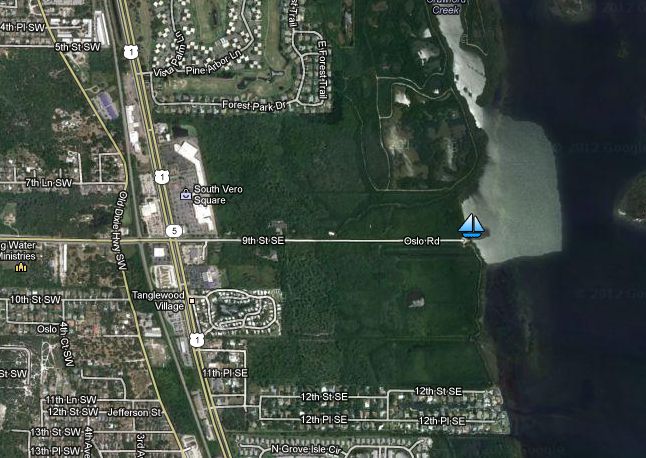
INDIAN RIVER COUNTY — In a strange contradiction, the Board of County Commissioners is using taxpayer money to protect seagrass on the Moorings Flats at the same time it is proposing to spend $900,000 on a project scientists, environmentalists and federal agencies say would destroy seagrass and cause other environmental harm in the same area.
Commissioners voted unanimously in October to provide $9,000 in matching funds for a project intended to protect a lush underwater meadow on the Moorings Flats that is a critical fish nursery and ecological resource in the Indian River Lagoon.
The action was important because the stretch of the lagoon south of the 17th Street Causeway where the Mooring Flats are located is the only part of the estuary in Indian River County where seagrass still grows after a series of algae blooms in 2011 and 2012 killed grass beds to the north. The commission was widely praised for its decision.
But then, commissioners seemed to reverse course by authorizing another attempt to fund a dredging, paving and construction project at the Oslo Road boat ramp that experts say would damage seagrass and fish-breeding habitat.
“With increased boat traffic at the Oslo Road ramp, you will impact seagrass,” says Dr. Grant Gilmore, senior scientist with Estuarine, Coastal and Ocean Science in Vero Beach. “There is no question about that. The water at Oslo it is quite shallow and you will have people going through sea grasses, damaging them with their props.”
Over the past several years, the commission’s plans for the site have been repeatedly rejected by a laundry list of state and federal regulatory agencies including the Environmental Protection Agency, the U.S. Fish and Wildlife Service, the National Marine Fisheries Service, the Florida Fish and Wildlife Conservation Commission and the Florida Department of Environmental Protection.
The county has encountered passionate opposition from The Sierra Club, the Save the Manatee Club, the Marine Resources Council and other respected scientific and environmental organizations.
The groups and government agencies have said the proposed work will endanger manatees in addition to damaging seagrass and fish populations. They point out the ramp is located within the boundaries of a state aquatic preserve in a high-use manatee area on property the county bought through the Florida Communities Trust Program primarily for conservation.
The county needs permits from the Army Corps of Engineers and St. Johns River Water Management District to move ahead with revamping and expanding the boat ramp facility.
After spending half a million dollars and putting in years of effort, it has not received a permit from either agency.
Appearing before the Florida Inland Navigation District (FIND) in August to seek money for the project, Michael Nixon, a roadway production manager who is spearheading the project for the county, told the district board the Corps had denied the permit for two reasons.
“The first part of the denial was based off of the U.S. Fish and Wildlife determination that the plan would cause a manatee kill – which we don’t agree with.”
He said the other part of the denial was based on the presence of a “waterway of national significance south of the project area and “pristine mangroves to the north.”
“They don’t want us to encroach into either of those areas and we basically can’t fit what we want to do in between them,” Nixon said. “We are kind of at a standstill there.”
Nixon now says St. Johns has issued a permit for the project, but St. Johns spokesman Hank Largin says the permit is still pending.
“We asked them for more information about the latest version of the project, which they sent us in February. We are reviewing that information and have 60 days to make a decision,” Largin says.
In its most recent action on the matter, the commission authorized Nixon to re-apply for a $437,500 FIND grant that would pay for half of the project, if permits are ever granted.
The county would provide $462,500 to pay the rest of the cost of draining wetlands, building a larger parking lot, paving a stretch of Oslo Road and dredging the channel that connects the ramp to the Intracoastal Waterway.
The county’s urgent desire to revamp the facility seems odd to some observers in part because the boat ramp and parking area are in good condition now and the area is well-used by boaters and fishermen.
The docks and signs were built in 2009 and on weekends fishermen regularly put their boats in the water and park their trucks and empty trailers on the side of Oslo road, where there is plenty of room for parked vehicles and passing traffic, or in the existing lot adjacent to the docks and ramp.
“The level of access that has traditionally been available at Oslo is appropriate for that site,” says David Cox, Ph.D, an environmental consultant who works on many private and government projects in the county. “Intensified usage is not going to be sustainable for the natural resources there.”
Gilmore, a founding scientist at Harbor Branch who wrote his doctoral dissertation on seagrass and is widely regarded as the foremost expert on fish in the Indian River lagoon, says expanding the facility could have a disastrous impact on fish populations.
Fish larvae are guided by chemical signals to specific locations to mature and Gilmore says the mangroves north of the boat ramp and the culvert to the south the Corps calls a waterway of national significance constitute the most abundant fish nursery between Cape Canaveral and the Jupiter inlet.
Tens of thousands of snook, tarpon, red drum and sea trout settle and mature in the protected waters the county project would disrupt, emerging to populate the lagoon and coastal waters as far north as the Carolinas.
“I can’t stress enough how significant this location is,” says Gilmore who has been conducting studies in the area for 30 years. “It makes no sense to protect one area and damage another area directly across the river.”



